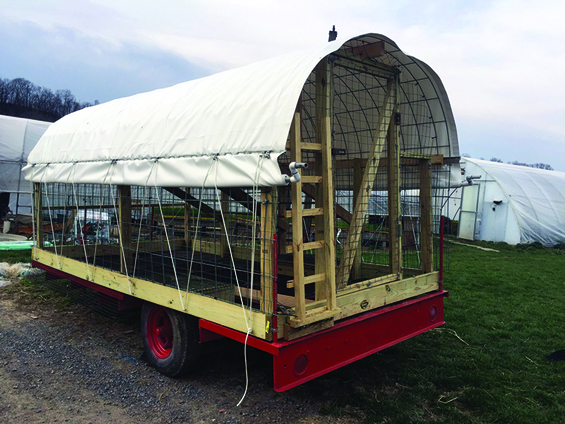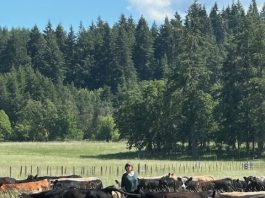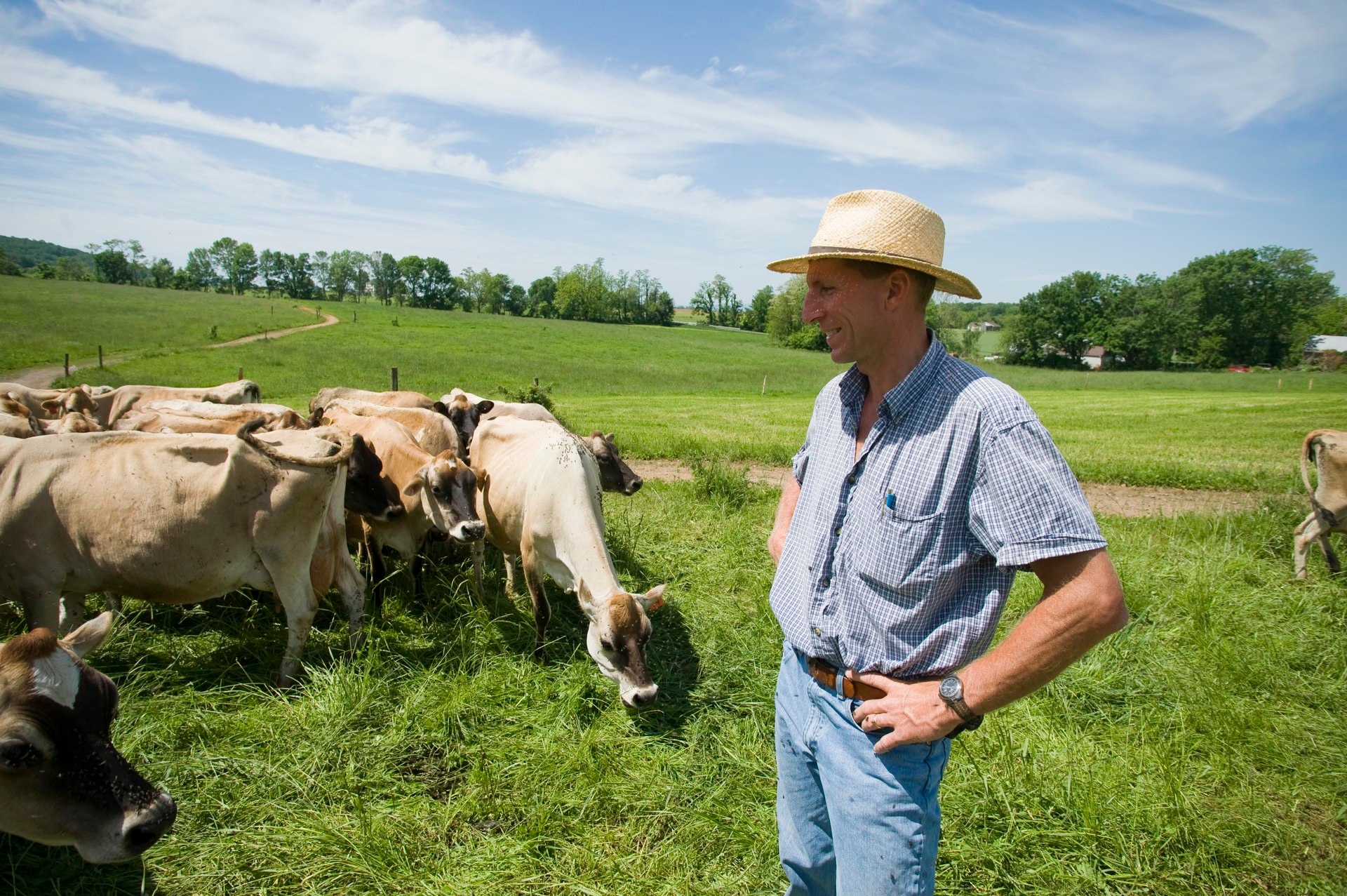When I rolled into Village Acres Farm in Mifflintown, Pennsylvania, the bright red egg mobile with a crisp white covering caught my attention, in part because it was showroom ready (it had yet to house any chickens). This was a new shelter build, and I made sure to check it over closely before leaving for home, because who can resist an egg mobile?

The shelter wasn’t big enough to hold the hundreds of pullets I was dropping off, so I made time to catch up with APPPA member Hannah Smith-Brubaker to get some details about how she and Debra constructed the shelter.

Hannah informed me that most of the shelter was repurposed from a nearby farm. This is a classic trash-to-treasure story and reaffirms that opportunity can often be found in unexpected places.
I won’t be sharing step-by-step build instructions, as I think most things are self-evident from the pictures. The design is relatively simple in concept while accounting for the welfare of the flock. Nevertheless, I field many questions about layer shelters, in part because there are more components to contemplate compared to broilers. I think this design is reproducible by anyone at larger and smaller scale.
The shelter Hannah and Debra rescued was going to be sold for scrap by the other farm, so the first order of business was to tear it apart. They considered trying to repair the existing shelter, but like many rebuilds, it was a better choice to start fresh from the frame up. Village Acres is an organic vegetable farm, and as they were spraying transplanting trays with the air sprayer, they decided to spray the frame to stop it from rusting. The result was a shiny red paint job. Using what they had on hand is a big theme in this shelter.
Other than the frame and the wheels, the only other thing they saved from the old shelter was the roosting bars.
Repurposing an Old Frame
Village Acres runs a laying flock of up to 600 production red layers divided in two pasture shelters on skids. This egg mobile is considerably smaller with a footprint of 13-1/2’ x 6’ for approximately 81 square feet. The frame is not level or square, and one end is wider than the other by several inches. I’m convinced the hens won’t notice.

It will house the farm’s mixed flock of heritage chickens. The number of birds the house will accommodate will depend on how densely you want to stock your layers, and farmers have varying opinions on this. Stocking densities inside egg mobiles range from .33 to 1 square feet when the birds range outside the shelter. Hannah estimates she’d go as high as 50 birds in her design, but there’s likely some room to go more and push the density to whatever your comfort level is.
One of the advantages of using this shelter is that the birds have room to escape the sun and rest in the shade. The first shady spot is inside the egg mobile itself, but the flock can also seek shade and protection from weather under the trailer frame. To me, this is always a big consideration when you ask how many birds can fit inside an egg mobile. Roosting space at night being one concern, but extended time out of the rain and other weather is another. Do the birds have enough space to not stress each other out when they’re in close quarters for long periods of time?
Hoop Structure
The hoop structure is formed by three cattle panels that were repurposed and on-hand at the farm. Hannah did purchase new pressure treated 2”x6” lumber to frame out the base of the shelter and attach the cattle panels. The rest of the 2”x4” frame was constructed to support the cattle panels, the door, and the nest box. The cattle panel was covered with additional poultry wire four feet up each side and along the ends to add some protection by reducing the gaps in the cattle panel, which also helps keep the hens inside.
Hannah had a neighbor sew a heavy-duty tarp to fit. The 2×4 frame creates a four-foot-tall side wall for the tarp roof to attach via wiggle wire, as you can see in picture (on page 4).
The space from the wiggle wire to the bottom end of the tarp creates roll-up sides for those summer days when extra ventilation is needed.

Access for the Hens and Farmer
Egg collection happens from the outside of the egg mobile via a community roll-out nest from Best Nest Box. The wire rack sitting next to the nest box is to hold a five-gallon bucket that gravity feeds waterers along each side of the shelter. This streamlines chore time and mitigates the need for people to enter the egg mobile to do routine chores. It also helps keep you from dragging clean eggs back through the layer house.
In the back of the trailer, Hannah and Deb designed an access door for the hens that’s designed to work with an automatic door. The “ladder” ramp folds up for transport.

Designing for the Wind
In the photos, the ends of the egg mobile are open, but Hannah has since added plastic to enclose an end to protect the hens and the shelter from high winds. Prevailing winds come from the west, and the first time out on the pasture, she had to position the shelter with the ends facing east and west so that the nest box would be level. By covering the end facing west, the draft stays off the birds and wind gusts are less likely to lift the shelter.
The tarp on each long side of the shelter is fastened with rope tie-downs to prevent the ends from flapping in the wind, and just as the sides can be rolled up in the heat, they can be rolled down and secured during inclement weather.
Waterer
A gravity fed waterer supplies a PVC pipe with drinker cups along each side. The basket next to the nest box provides a way to refill the water without going into the shelter. Providing drinking water along each side of the house, Hannah ensures ample water stations for the hens.
 On Pasture
On Pasture
Hannah rotates this flock behind the sheep. Every time she moves the sheep, she’ll move the egg mobile in behind them. The shelter should be durable enough to withstand the high winds on the hill that are common at Village Acres, but it’s light enough to move with a small utility vehicle (e.g., a side-by-side).





Love it! Thanks for sharing things like this; I enjoy seeing other farms’ ideas and methods. It’s been the basis for a lot of what I’ve done. This egg-mobile is snazzy.
Comments are closed.